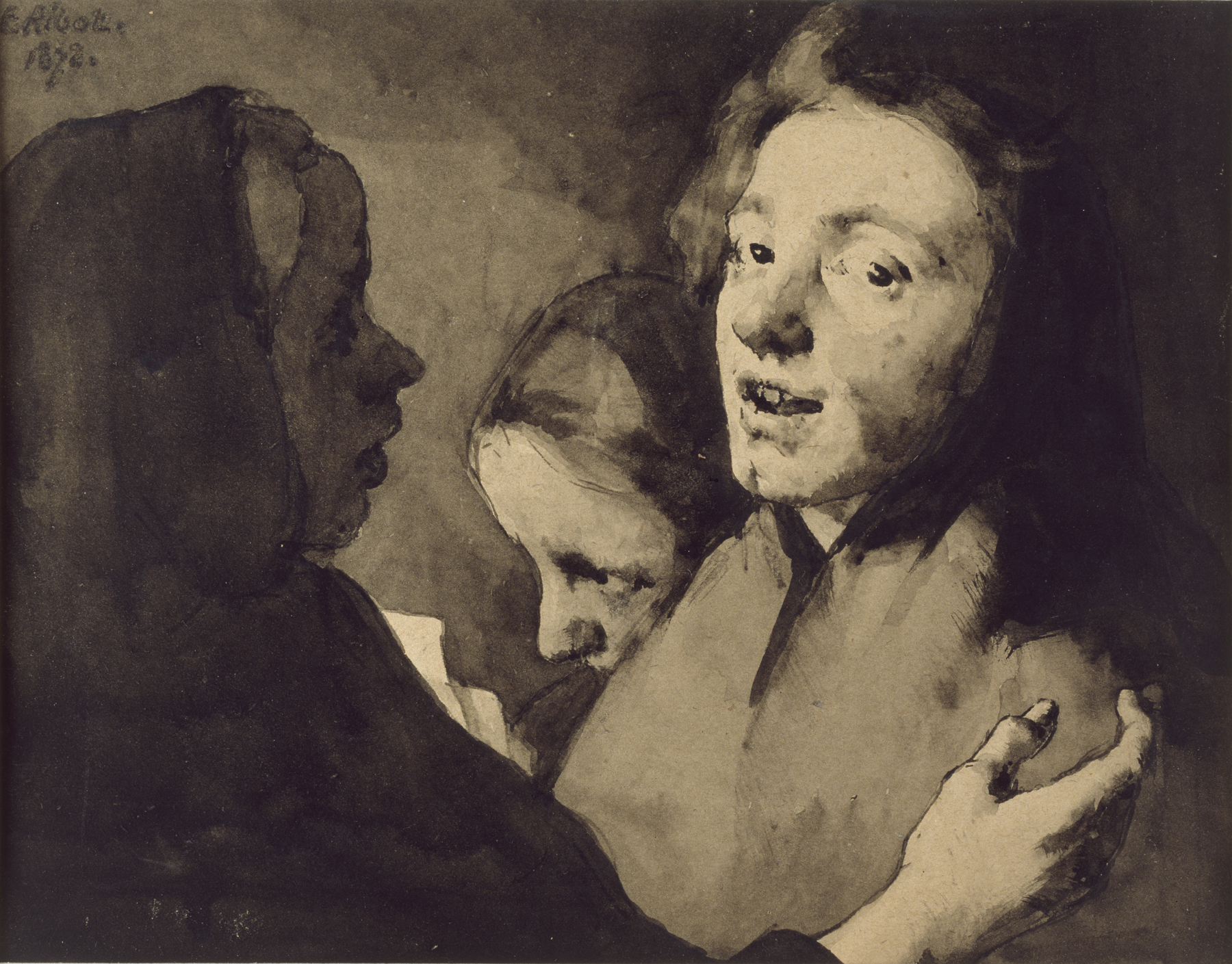Conversation Piece: Three Heads
(18th and 19th Centuries )
The rough, rustic style that Ribot developed was perfectly suited to the subject matter he favored. As a member of the Realist movement, Ribot was drawn to depicting the poor in a manner that did not disguise the reality of their circumstances. Using individuals from his own circle of family and friends as models, Ribot produced small paintings based on themes from the daily life of the Parisian working class, particularly the activities of musicians, cooks, servant girls, and tradesmen.
Ribot's familiarity with the people and the life he portrayed in his works may explain the sense of intimacy and directness that characterizes his paintings. That same sense of immediacy is evident in "Conversation Piece: Three Heads." The cropped composition, close viewpoint, and the presence of the figure on the right who looks outwards to address the viewer evokes a feeling of closeness and warmth. This sensation is emphasized further by the lighting of the scene. Ribot's modulation of the wash medium is masterful, allowing him to produce a full range of light effects from dark shadow through half tones to full light. Thus, while the figure on the left is seen from behind and in a heavy shadow, a warm light casts a glow on the faces of the figure on the right and the young girl in the background. Finally, the thick, rough, black line that outlines the figure's forms grants the scene a fundamental earthiness appropriate to the subjects' low social status.
Inscription
Provenance
Provenance (from the French provenir, 'to come from/forth') is the chronology of the ownership, custody, or location of a historical object. Learn more about provenance at the Walters.
Cyrus J. Lawrence, New York [date and mode of acquisition unknown]; Cyrus J. Lawrence Sale, American Art Association, New York, January 21-22, 1910, no. 5; Henry Walters, Baltimore, 1910, by purchase; Walters Art Museum, 1931, by bequest.
Exhibitions
| 2005-2006 | The Essence of Line: French Drawings from Ingres to Degas. The Walters Art Museum, Baltimore; Baltimore Museum of Art, Baltimore; Birmingham Museum of Art, Birmingham; Tacoma Art Museum, Tacoma. |
| 1998-1999 | Botanical Delights: Floral Motifs in 19th-Century Art. Government House, Annapolis; Strathmore Hall Art Center, North Bethesda; Academy Art Museum, Easton. |
| 1998-1999 | A Discerning Eye: Nineteenth-century Drawings and Watercolors. Academy Art Museum, Easton. |
| 1997-1998 | French Master Drawings. The Walters Art Gallery, Baltimore. |
| 1983 | A Connoisseur's Portfolio: Nineteenth-century Drawings and Watercolors in the Walters Art Gallery. The Walters Art Gallery, Baltimore. |
| 1979 | A Supple Brush: The Flowering of Continental Watercolors. The Walters Art Gallery, Baltimore. |
Conservation
| Date | Description | Narrative |
|---|---|---|
| 1/1/2002 | Treatment | examined for exhibition; re-housed; mounted; cleaned |
Geographies
France (Place of Origin)
Measurements
6 x 7 5/8 in. (15.3 x 19.4 cm)
Credit Line
Acquired by Henry Walters, 1910
Location in Museum
Not on view
Accession Number
In libraries, galleries, museums, and archives, an accession number is a unique identifier assigned to each object in the collection.
In libraries, galleries, museums, and archives, an accession number is a unique identifier assigned to each object in the collection.
37.2429




